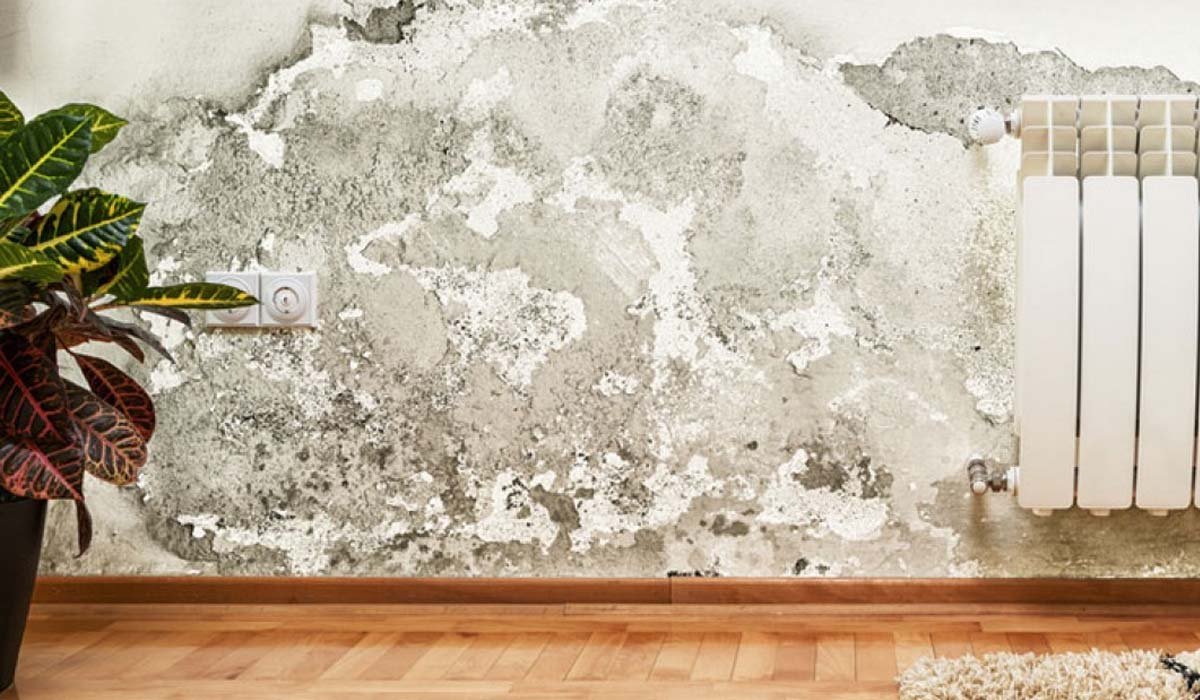Damp is one major concern when buying or selling a property. Some may not see it as a problem, but in the long run, it can damage a property. Identifying the source of the damp is difficult. If you don’t have any idea about it, the best thing to do is hire a professional to do the job.
If you’re planning to sell your home or buy a new one, inspect the property for any dampness signs. A surveyor can help you in identifying the signs and suggesting solutions.

Table of Contents
Common types of damp
It is essential to identify the common types of damp. It will give you an idea about the extent of damage to the property. The signs may overlap with each type and different causes as well.
- Rising Damp
It commonly occurs on the wall when the water rises from the ground. If this happens to your wall, the best solution is to apply a damp proof membrane. Having a damp proof course will prevent the penetration or absorption of the water. Otherwise, rising damp will be a problem of the property when left unattended. You may notice the lower wall surfaces with crumbling plaster or springy floors.
- Rain Penetration
Another type of damp issue is rain penetration. It is mistakenly identified as rising damp. It happens when there are external defects on the property, allowing the rainwater to penetrate the inner walls. The adverse effects of the damp can visually affect the feel and look of the property. The worse thing is that a musty smell may also develop. That is why it is essential to provide an immediate solution at the soonest possible time. Some of the visible signs of rain penetration damp are damaged plaster, localized dampness, mold growth, wet rot, and may damage the property.
- Condensation
Condensation is the result when moisture is released from cold walls, furniture, or windows. This damp issue happens because of high humidity. Black mold may appear and may damage anything like furniture, walls, and also hazardous to health.
Selling or buying a house is stressful because it involves many things to consider. The situation may get even difficult if the property has damp issues. Keep in mind that a damp problem may worsen when not addressed properly. Thus, before making a transaction with a buyer, you must seek advice from a damp proofing specialist.

Damp as a seller
Selling your property can be exciting. But prior to advertising your property on the market, inspect for any damp issue. Check every corner of the house and let a building surveyor do the job. The surveyor will check the walls for moisture using a calibrated damp meter. If the damp is on the wall, most likely there is a leak on the roof. A defective gutter may also cause a leak. If the property was built without a damp proof course, the damp may rise from the ground.
As a seller, you should not ignore the damp problem before selling your property. Otherwise, the buyer may pull out the deal if they found out the damp problem.
Damp as a buyer
Buying a property requires thorough planning and research. Not all sellers would be truthful to divulge the actual situation of the property. One question a buyer must ask from the seller is if there’s a damp issue. Or, the best thing to do by the buyer is to hire a damp surveyor to check the property. It is not good to invest in a property having damp problems because it would easily deteriorate. The cost of installing a damp proof course would add up to the cost of buying the house. Thus, let the seller fix the problem first before closing the deal.
Here are some signs of a damp problem.
- Mold on painted walls – you can easily determine a damp problem when you see mold or dark patches on walls. You should check the outer wall for any crack that may cause a leak or allow the water to penetrate the inner walls.
- Musty smells – another unwanted result of a damp problem is the musty smells. The mold causes a musty odor because of the microbial volatile organic compounds present in molds. To avoid the musty smell, it is best to get rid of the growing molds. It is also essential to prevent intrusion of water and prevent moisture.
- peeling wallpaper – obviously, if there’s damp on the wall it will cause peeling of wallpaper. The best thing to do is to identify the source of the leak and fix it immediately.
- Crumbling wood – the moisture on the wooden wall can cause crumbling wood or wet rot. The wood would rot easily if the problem was left untreated.
Final thoughts
It is essential to address the damp problem if you are planning to buy a new property or sell your house. No one would want to invest in a property that is not in good condition. Otherwise, you may incur more expenses by renovating or repairing the property.